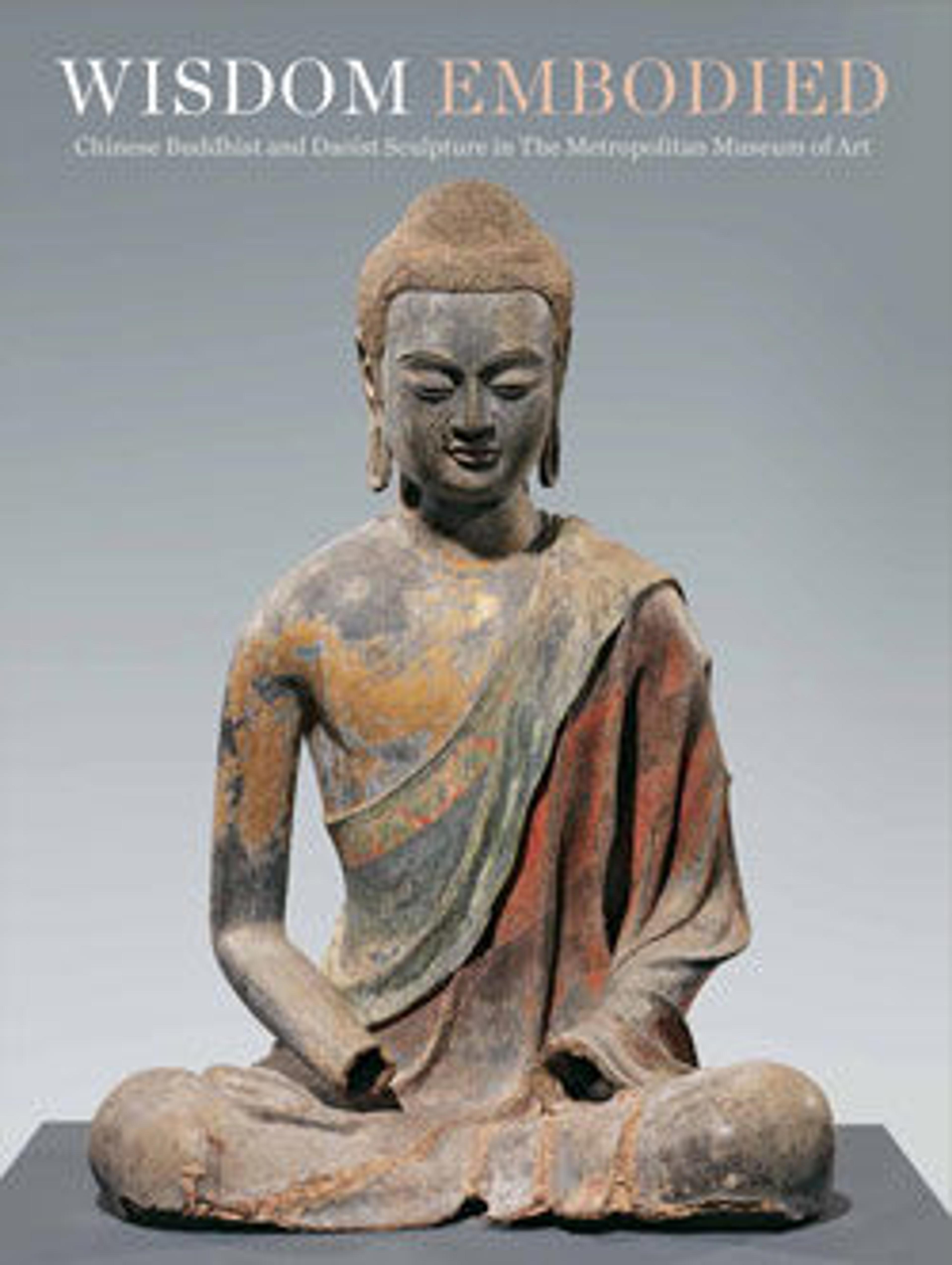Pagoda base with four Buddhas
The construction of small, square, pagoda-like shrines appears to have begun in China during the Northern Qi period, and flourished through the Tang dynasty (618–907). Comparisons with other examples suggest that this shrine once stood on a square, possibly stepped, base and was capped by either a domed or tiered roof. Its exterior walls, marked by prominent entryways, enclose a pillar with four Buddhas; although they can no longer be accurately identified, they likely represented the Buddhas most important to Chinese practice during the sixth century. Each wall is capped by a lintel that bears representations of multiple seated Buddhas. Paired dragons fill the upper registers and guardians and lions (many now missing) protect the entryways.
The shrine’s interior walls are carved with rows of multiple tiny Buddhas. Exhibiting variations in posture and clothing, they symbolize the immanence of many Buddhas in the cosmos. Numerous shrines of this type can be found in northeast China and are often associated with the remains of notable monks, indicating that they may have functioned as funerary monuments. However, the prominent central pillar in this example suggests that the shrine may have been used for visualization exercises, with a focus on these particular Buddhas.
The shrine’s interior walls are carved with rows of multiple tiny Buddhas. Exhibiting variations in posture and clothing, they symbolize the immanence of many Buddhas in the cosmos. Numerous shrines of this type can be found in northeast China and are often associated with the remains of notable monks, indicating that they may have functioned as funerary monuments. However, the prominent central pillar in this example suggests that the shrine may have been used for visualization exercises, with a focus on these particular Buddhas.
Artwork Details
- Title:Pagoda base with four Buddhas
- Period:Northern Qi dynasty (550–577)
- Date:ca. 560–75
- Culture:China
- Medium:Limestone with traces of pigment
- Dimensions:H. 95 in. (241.3 cm); W. (one face) 67 1/2 in. (171.5 cm)
- Classification:Sculpture
- Credit Line:Gift of Henry and Ruth Trubner, in memory of Gertrude Trubner and Edgar Worch, and Purchase, The Astor Foundation Gift, 1988
- Object Number:1988.303
- Curatorial Department: Asian Art
More Artwork
Research Resources
The Met provides unparalleled resources for research and welcomes an international community of students and scholars. The Met's Open Access API is where creators and researchers can connect to the The Met collection. Open Access data and public domain images are available for unrestricted commercial and noncommercial use without permission or fee.
To request images under copyright and other restrictions, please use this Image Request form.
Feedback
We continue to research and examine historical and cultural context for objects in The Met collection. If you have comments or questions about this object record, please contact us using the form below. The Museum looks forward to receiving your comments.
